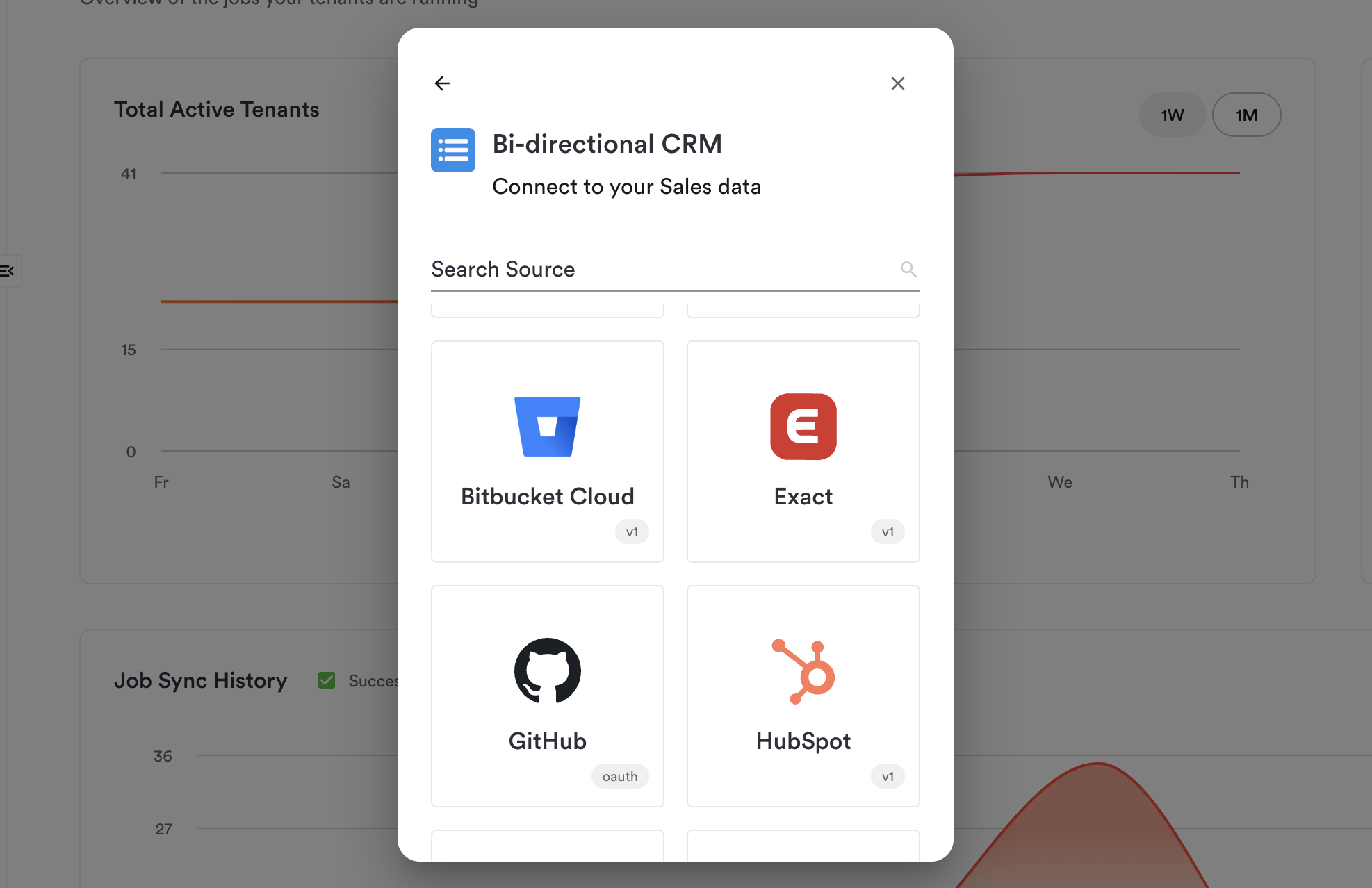What are Source Settings?
Source settings determine:- How a Source appears to your tenants
- How you and your tenants authenticate to the Source
- How Hotglue will run this Source
Example Source Settings
Understanding the Source Fields
tap
The tap field is a unique identifier for the source. It is used internally to reference the source and should be unique across all sources.
label
The label field is a human-readable name for the source. This is the name that will be displayed in the user interface.
icon
The icon field is a URL to an image that represents the source. This icon will be displayed in the user interface alongside the source’s label.
tags
The tags field is an array of strings that categorize the source. These tags can be used to filter and search for sources.
domain
The domain field specifies the primary domain associated with the source. This is typically the domain of the service the source integrates with.
type
The type field specifies the authentication method used by the source. Accepted values are oauth and api
isForked
The isForked field indicates whether this source has been modified from the default hotglue source settings.
install_uri
The install_uri field can be used to overwrite the default git repo that the Tap will be installed from:
install_uri for particular tenants by instead using:
is_private_repo
The is_private_repo field tells hotglue to use your configured git access token when installing your Tap.
formattable_fields
The formattable_fields flag allows you to set a list of config flags that can be used as variables for your auth URLs.
auth_url when completing the OAuth flow:
connect_ui_params are used as formattable_fields by default.
version
The version field allows you to add a chip to the Widget UI that specifies the source version.

Version chips displayed on the source card